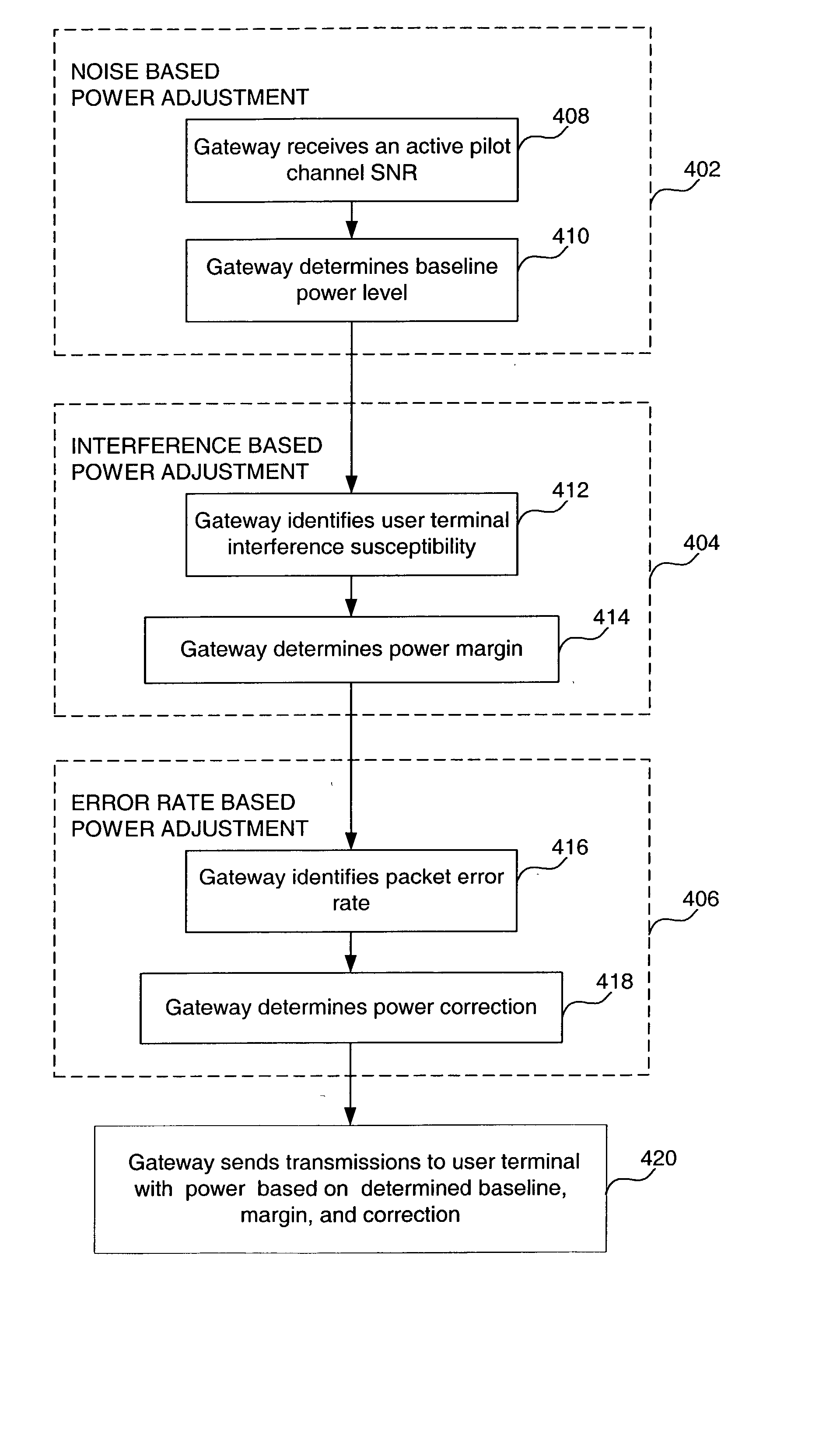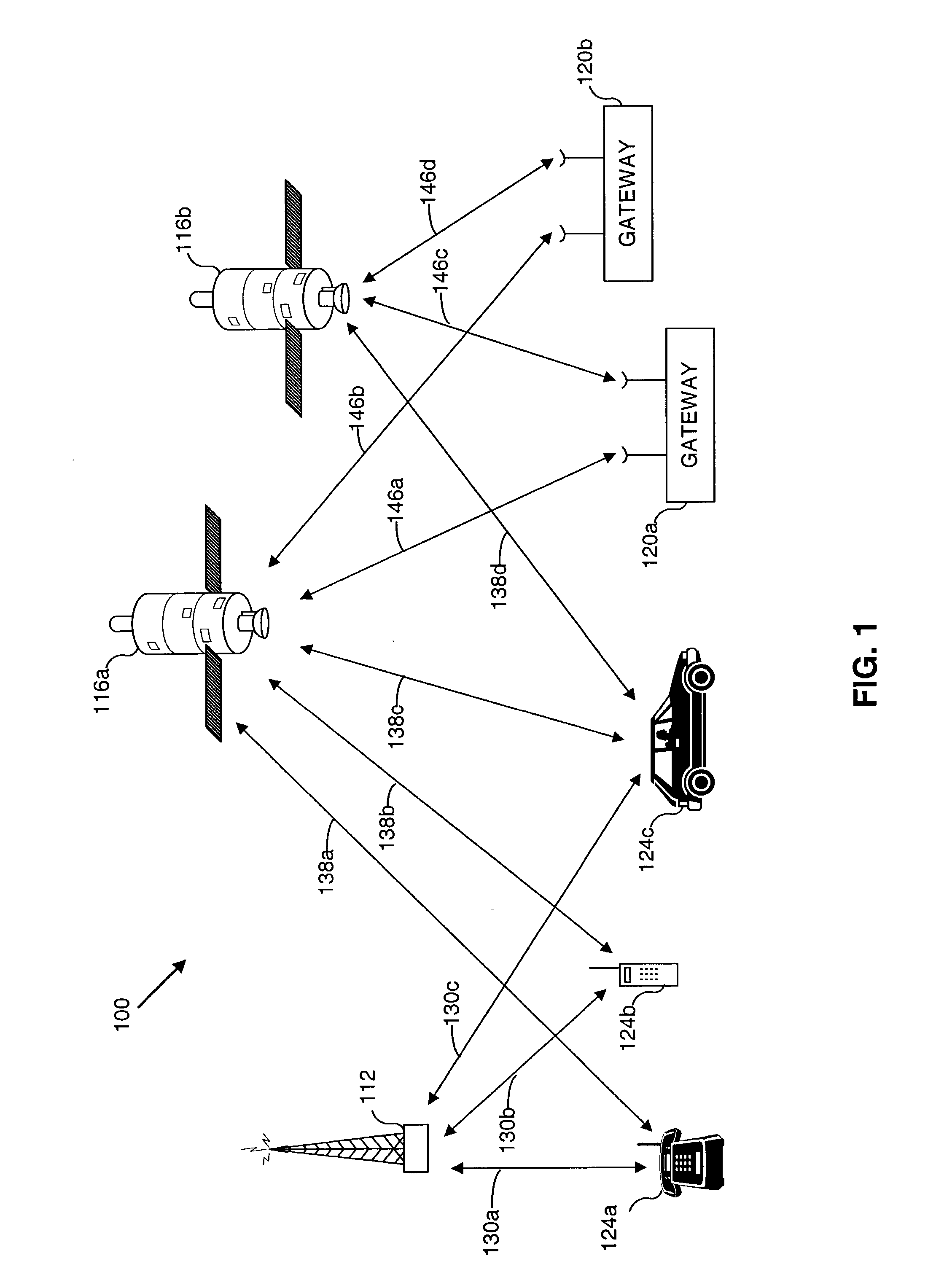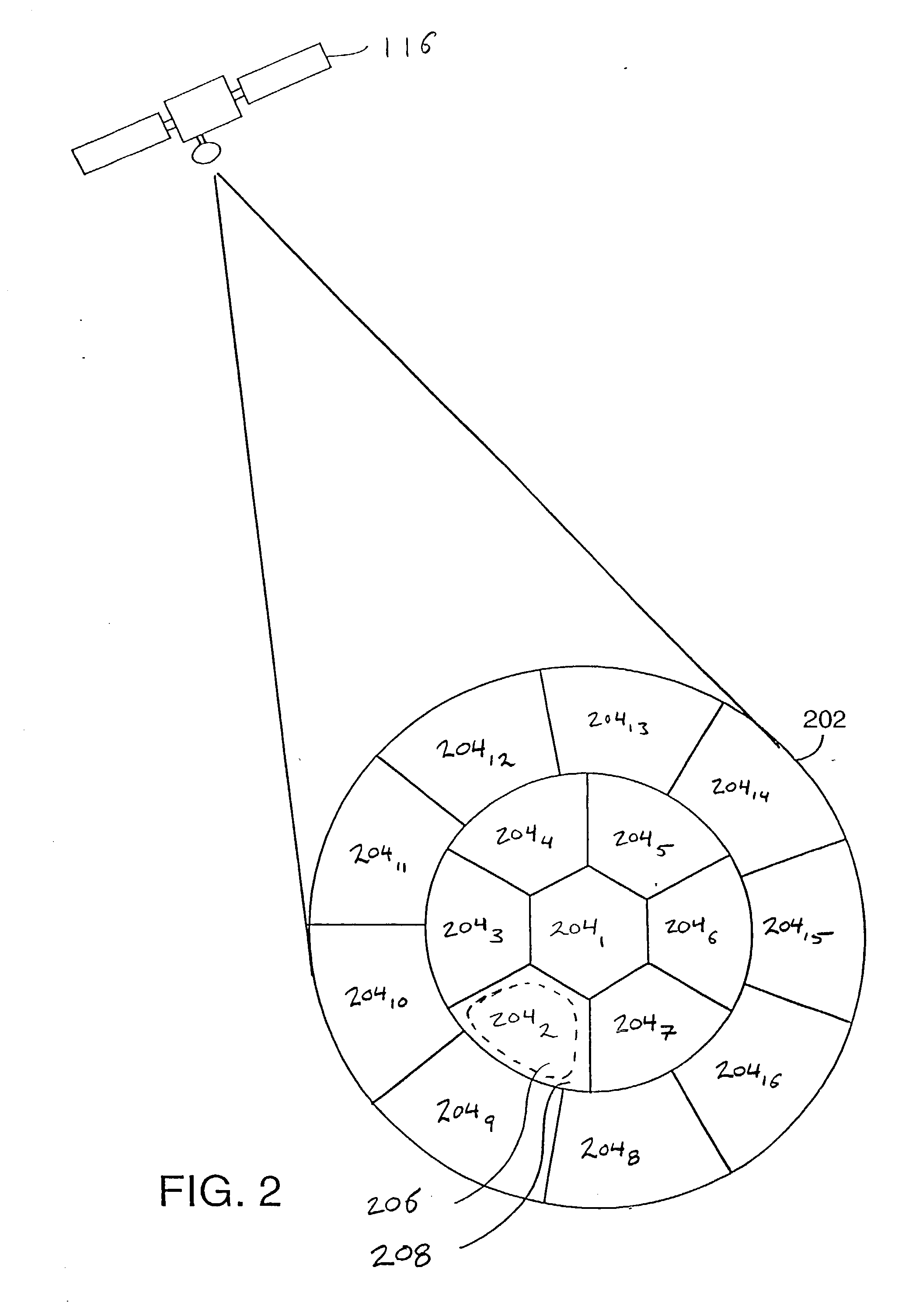Controlling forward link traffic channel power
a forward link and channel power technology, applied in the field of wireless communication networks, can solve the problems of limiting the data rate at which user terminals can access data, introducing a higher bit error rate for a given signal-to-noise ratio, and introducing a higher bit error rate, so as to preserve transmit power and keep interference levels
- Summary
- Abstract
- Description
- Claims
- Application Information
AI Technical Summary
Benefits of technology
Problems solved by technology
Method used
Image
Examples
Embodiment Construction
[0036] I. Exemplary Operational Environment
[0037] Before describing embodiments of the invention in detail, it is helpful to describe an example environment in which the invention may be implemented. The present invention is particularly useful in mobile communications environments. FIG. 1 illustrates such an environment.
[0038] FIG. 1 is a block diagram of an exemplary wireless communication system (WCS) 100 that includes a base station 112, two satellites 116a and 116b, and two associated gateways (also referred to herein as hubs) 120a and 120b. These elements engage in wireless communications with user terminals 124a, 124b, and 124c. Typically, base stations and satellites / gateways are components of distinct terrestrial and satellite based communication systems. However, these distinct systems may interoperate as an overall communications infrastructure.
[0039] Although FIG. 1 illustrates a single base station 112, two satellites 116, and two gateways 120, any number of these eleme...
PUM
 Login to View More
Login to View More Abstract
Description
Claims
Application Information
 Login to View More
Login to View More - R&D
- Intellectual Property
- Life Sciences
- Materials
- Tech Scout
- Unparalleled Data Quality
- Higher Quality Content
- 60% Fewer Hallucinations
Browse by: Latest US Patents, China's latest patents, Technical Efficacy Thesaurus, Application Domain, Technology Topic, Popular Technical Reports.
© 2025 PatSnap. All rights reserved.Legal|Privacy policy|Modern Slavery Act Transparency Statement|Sitemap|About US| Contact US: help@patsnap.com



